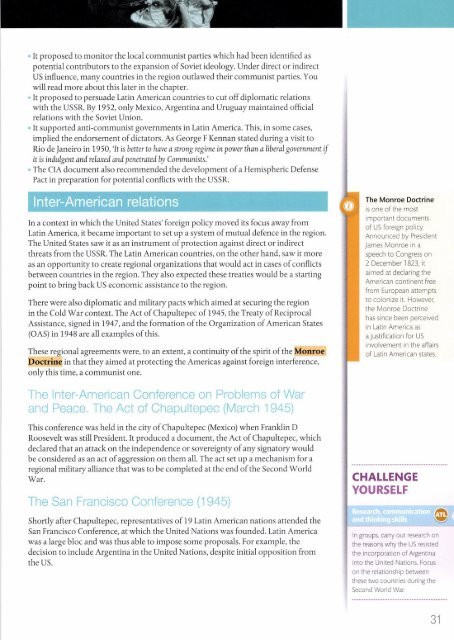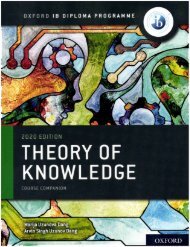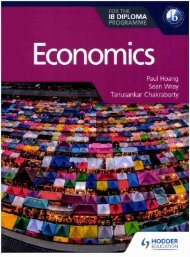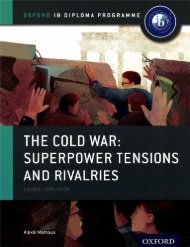SHELF 9780435183127 HISTORY PAPER 3 THE COLD WAR AND THE AMERICAS (1945-1981) STUDENT 60p
SHELF 9780435183127 HISTORY PAPER 3 THE COLD WAR AND THE AMERICAS (1945-1981) STUDENT 60p
SHELF 9780435183127 HISTORY PAPER 3 THE COLD WAR AND THE AMERICAS (1945-1981) STUDENT 60p
Create successful ePaper yourself
Turn your PDF publications into a flip-book with our unique Google optimized e-Paper software.
', It proposed to monitor the local communist parties which had been identified as<br />
potential contributors to the expansion of Soviet ideology. Under direct or indirect<br />
US influence, many countries in the region outlawed their communist parties. You<br />
will read more about this later in the chapter.<br />
. It proposed to persuade Latin American countries to cut offdiplomatic relations<br />
with the USSR. By 1952, onlyMexico, Argentina and Uruguay maintained official<br />
relations with the Soviet Union.<br />
- It supported anti-communist governments in Latin America. This, in some cases,<br />
implied the endorsement of dictators. As George F Kennan stated during a visit to<br />
Rio de )aneiro in 1950, 'lt isbetter to haw a strong regime in power than a liberal govemment if<br />
it is indulgent and relaxed andpenetratedby Communists;<br />
" The CIA document also recommended the development of a Hemispheric Defense<br />
Pact in preparation for potential conflicts with the USSR.<br />
In a context in which the United States'foreign policy moved its focus away from<br />
Latin America, it became important to set up a system of mutual defence in the region.<br />
The United States saw it as an instrument of protection against direct or indirect<br />
threats from the USSR. The Latin American countries, on the other hand, saw it more<br />
as an opportunity to create region al organizations that would act in cases of conflicts<br />
between countries in the region. They also expected these treaties would be a starting<br />
point to bring back US economic assistance to the region.<br />
There were also diplomatic and military pacts which aimed at securing the region<br />
in the Cold War context. The Act of Chapultep ec of <strong>1945</strong>, the Treaty of Reciprocal<br />
Assistance, signed in1947, and the formation of the Organization of American States<br />
(OAS) in 1948 are all examples of this.<br />
These regional agreements were, to an extent, a continuity of the spirit of the Monroe<br />
Doctrine in that they aimed at protecting the Americas against foreign interference,<br />
onlythis time, a communist one.<br />
The Monroe Doctrine<br />
is one of the most<br />
important documents<br />
of US foreign poliry<br />
Announced by President<br />
James l\4onroe in a<br />
speech to Congress on<br />
2 December'1823, it<br />
aimed at declaring the<br />
American conti nent free<br />
from European attempts<br />
to colonize it. However,<br />
the l\zlonroe Doctrine<br />
has since been perceived<br />
in Latin America as<br />
a justification for US<br />
rnvolvement rn the affairs<br />
of Latin American states.<br />
<br />
<br />
<br />
<br />
<br />
<br />
<br />
<br />
<br />
<br />
<br />
<br />
<br />
<br />
<br />
<br />
<br />
<br />
<br />
<br />
<br />
<br />
<br />
<br />
<br />
<br />
<br />
<br />
<br />
<br />
<br />
n groups, carry out research on<br />
<br />
the reasons why the US resisted<br />
<br />
the incorporation of Argentina<br />
<br />
into rhe Unrred Natiors. Foc.rs<br />
on the relationship between<br />
these two countries during the<br />
Second Wor d War.















